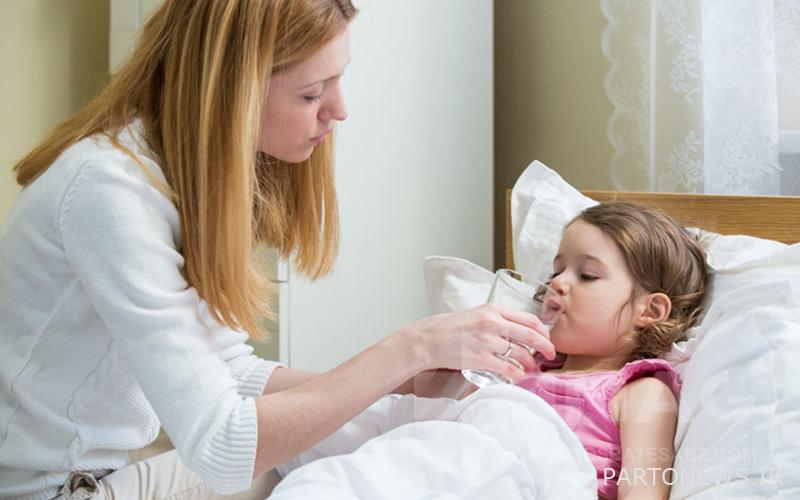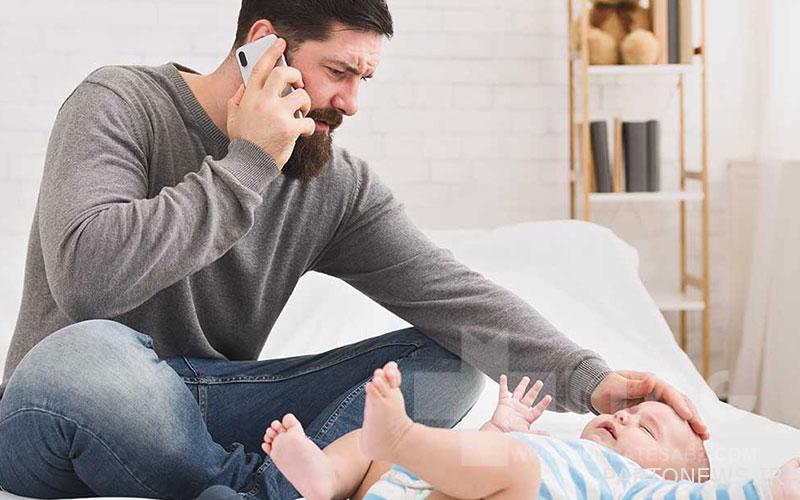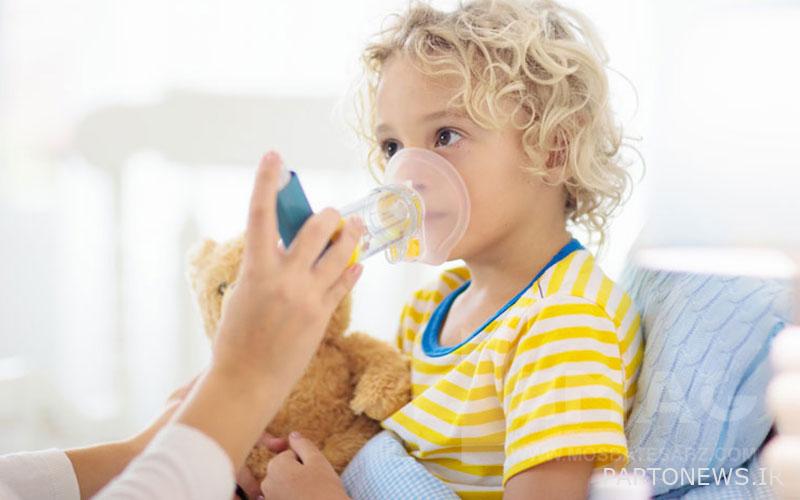10 common pediatric diseases and treatments

Fortunately, today, despite the discovery of vaccines for many diseases, children are less likely to be exposed to dangerous and deadly diseases. But there are still many diseases that sometimes shock parents and put children in bed. In most cases, more than 90% of common pediatric diseases can be best treated by seeing a doctor in time. Here are the most common illnesses that children get, especially in the early years of life. We will also tell you the latest treatments for each of them. So join us in this article from Green Positive Online Pharmacy Magazine.
What we read in this article
Colds in children
Colds are very common in infants and toddlers; They usually catch colds 6 to 8 times a year. Nasal congestion, sneezing, coughing, tears, sore throat and fever are the most important symptoms of colds in children. During infancy, breastfed babies are less likely to catch colds than other babies because breast milk plays an important role in strengthening the immune system.
Treatment of colds in children
In order to treat colds in children, pay attention to the following strategies:
- Keep your baby’s body hydrated by drinking homemade liquids and juices to avoid dehydration.
- Keep the child away from crowded places and other children while he is sick.
- Teach your child to use a tissue to clean their nose and to cover their mouth when sneezing and coughing.
- If the child does not recover after a few days or still has a fever, be sure to see a doctor.
- Avoid taking antibiotics or desiccants arbitrarily without consulting your doctor.
Bronchitis or bronchiolitis
Bronchitis is more common in adults. But bronchiolitis mostly affects children and causes inflammation of the bronchi, which are the smallest airways in the lungs. Symptoms of bronchiolitis include wheezing and rapid breathing. Bronchiolitis is more common in children 3 to 6 months old.
What is the treatment for bronchiolitis?
Do the following:
- Keep your baby hydrated with water and juices rich in vitamin C.
- Do not take your child to dusty, polluted areas, such as cigarette butts.
- If your child is wheezing for the first time, has difficulty breathing, is lethargic, and has no desire to eat, be sure to see a doctor.
Stomach flu in children
Other common childhood illnesses include stomach flu or gastroenteritis. Nausea, vomiting, and foul-smelling and watery stools are symptoms of gastric flu in children. These symptoms may also be due to an infection in the gut. Muscle aches, stomach aches, and mild fever may also be present in the stomach flu.
How to treat stomach flu
- Use water and fluids that do not contain milk to replace the water and salts lost in the baby.
- Encourage the child to drink small amounts of fluids frequently (each time if large amounts are not possible).
- Stomach flu is contagious. So keep children out of contact with others.
- If the illness persists or worsens, take the child to a doctor.

What is foot and mouth disease?
HFMD is a viral disease that is more common in infants and young children. A rash or blister on a child’s palms, feet, or buttocks is a sign of hand, foot, and mouth disease. Be aware that the disease is contagious and can be easily transmitted through close contact with an infected person, blisters, or nasal discharge.
Treatment of foot and mouth disease
- If your child has HFMD, do not send him or her to daycare or school. Keep him at home so that the disease does not spread to others.
- Keep your baby hydrated and give him plenty of water and fluids.
- Give soft foods such as porridge to your child, as sores in the mouth can be very annoying and painful.
- Allow the baby to get enough rest in bed.
- Disinfect toys and other items your child is dealing with to prevent the spread of HFMD in the home.
- If the child is suspected of having hand, foot and mouth disease, be sure to take him to the doctor.
Febrile seizures are a common disease in children
A very high fever can cause seizures if left unchecked. During a seizure, the child may become unconscious, have severe muscle stiffness, fall suddenly, and shake his or her arms and legs. In seizures, the jaw is usually contracted and you may see the eyes rotate.
What to do when a child has a seizure?
- Do not try to prevent seizures. Lay the child on the floor and allow the seizure to continue.
- Do not force anything into your child’s mouth. Just make sure his airways are open and there is no chance of suffocation.
- After the seizure, let the child sleep and rest if he wishes.
- If this is the first time your child has a seizure, be sure to see a doctor.

Related Posts
Chickenpox in children
Does your child have a fever and a red, itchy skin rash on his face and body? Chickenpox rash usually appears within a few days and eventually turns into blisters. If the skin rash is removed, they are more likely to remain. Chickenpox is highly contagious and can be transmitted from an infected person to others through direct contact or airborne droplets. The younger the child, the less common the symptoms of chickenpox.
What can be done to treat chickenpox?
- If your child gets chickenpox, report it to daycare or school and keep the child at home to prevent the spread of the disease.
- To prevent the child from scratching himself, trim his nails and gloves as much as possible.
- To relieve itchy skin, bathe your baby in relatively cool water.
- Be sure to see your doctor if the rash spreads too much and is red and tender.
- Be sure to take your child to the doctor if you notice dizziness, numbness, vomiting, rapid heartbeat, shortness of breath, tremors, loss of muscle coordination, stiff neck or high fever.
Eczema
A red, itchy rash on a child’s face or body may indicate eczema. Children who suffer from eczema usually have a history of this complication in those close to them and have diseases such as asthma or hay fever. Eczema is not contagious and cannot be passed on to other children through contact.
How to treat pediatric eczema?
- Keep your baby’s skin moisturized with moisturizer and use topical steroid creams as prescribed by your doctor.
- You can give your child antihistamines to reduce itching and help him sleep better.
- Keep your child away from dust, pets, sudden temperature changes, cigarette smoke and stress.
- Use mild soaps for washing and cover the baby with light cotton clothes.
- Be sure to take your child to the doctor if itching interferes with your child’s daily activities or sleep.
Asthma
Asthma is also a common disease in children. Wheezing and a feeling of tightness and pain in the chest are signs of asthma; So that it seems difficult for the child to breathe. Asthma is usually accompanied by coughs that do not go away easily. Asthma usually causes the baby’s airways to become inflamed and sensitive.
Treatment of pediatric asthma
- As instructed by your doctor, ask your child to use their asthma spray immediately. This can be repeated every 20 minutes to 1 hour.
- Keep your child away from dust, pollen, pets, cigarette smoke and stress.
- If your asthma symptoms get worse, you should take your child to a doctor as soon as possible.

Allergic rhinitis or hay fever
This disease is the same as allergies. Persistent sneezing and runny nose are symptoms of allergic rhinitis. The most common chronic allergic disease in children is allergic rhinitis, which can be associated with asthma, ear infections, or allergies.
Treatment of allergic rhinitis
Do the following:
- Keep the child away from stimuli such as dust, cigarette smoke and hookah.
- Use an air purifier to reduce dust.
- Put a long pillow under your child’s head to reduce congestion and make breathing easier.
- If allergic rhinitis affects your child’s daily activities, see a doctor. Your doctor may prescribe antihistamines or nasal sprays.
Constipation in children
If your baby’s stools become stiffer than normal and he or she has a slow bowel movement, he or she may have constipation. Stomach tightness and a feeling of restlessness and restlessness are other symptoms of constipation. Breastfed infants are less likely to develop constipation because breast milk is easily digested.
Treatment of pediatric constipation
- To treat constipation in children, it is better to consult a doctor first.
- Of course, you can also give him fig syrup or other laxatives.
- Consumption of water, fruits and vegetables and foods containing fiber help treat constipation.
- Physical activity and exercise are also effective in treating constipation.
Other common diseases of children
Some other common diseases in infants and children are as follows:
- Earache: Especially if it is accompanied by a high fever, the child should be examined by a doctor immediately.
- Urinary tract infection: The doctor will determine how to treat the baby after a urine test.
- Sinusitis: If it is accompanied by fever and runny nose, antibiotics are needed.
- Diabetes: should be controlled by consulting a doctor.
- Sickle cell anemia: The child needs regular medical attention.
- Obesity: The cause of obesity should be investigated, diet should be changed and treatment should be based on the cause.
The final word
In this article, we examined the common diseases of children. In general, if you suspect any unknown or dangerous disease in your child, we recommend that you see a doctor immediately. Many diseases are well treated in the early stages and can be easily prevented from progressing. We respond to your comments in this online magazine by doctors active in green positive. So any questions you have about children’s diseases can be shared with us and we will wait for an answer as soon as possible.
Please rate this article
[مجموع: ۰ میانگین: ۰]


